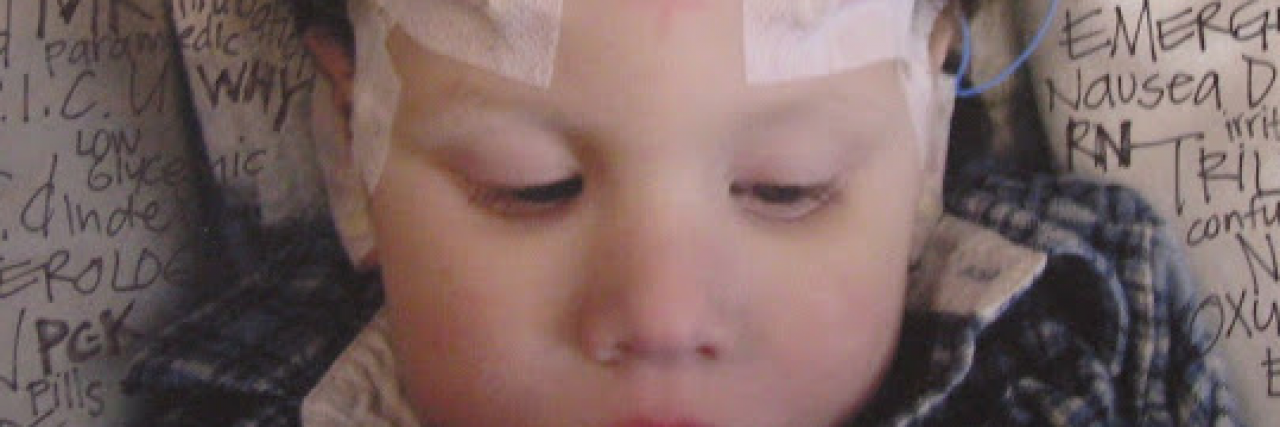Some of the faces in the crowd were familiar to me, though having lost a little of early childhood’s pudginess. Fifth graders scooted in around me as I sat at the front of the room. I’d been invited to talk to my son Calvin’s classmates about him and about epilepsy, as I do every year for a handful of teachers who’ll have me.
I always start by telling them Calvin was born prematurely and missing a section of his brain — some of its white matter, its superhighway — and as a result it takes Calvin a long, long time to learn things and some things he may never learn. I told them he’s visually impaired, can’t talk, doesn’t walk well and still wears diapers. I explained that when he was 2 he was diagnosed with epilepsy. Then I asked if any of them knew what epilepsy was. A cute boy at the edge of the group raised his hand.
Other relevant stories:
• Is Epilepsy Genetic
• Can You Join the Military with Epilepsy
• What Triggers Epilepsy
“It’s when your brain has seizures and you have to take medication to stop them.”
His answer hinted that he knew someone or perhaps had a pet with the disorder.
I went on to explain what seizures are, how several kinds exist and how some seizures can cause one to lose consciousness. I told them in some people, the medications don’t always completely control seizures but how folks still have to take the drugs and experience their side effects. I mentioned how the cannabis oil I’m making, which comes from a plant, seems to be helping Calvin safely come off one of his addictive, debilitating and harmful drugs. I ended my intro by saying Calvin is the best person I know. Then I asked them why they supposed I felt that way:
Because he’s your child?
Because he’s happy?
Because he’s nice?
I praised their answers and told them Calvin is the best person I know because he doesn’t have a mean bone in his body; he’s pure. I noted that I had one more important thing to say at the end of the session before I opened up the floor for questions.
“You can ask me anything about Calvin and about epilepsy,” I said, assuring them no question was out of bounds. After a short pause, the first hand went up from a pretty girl with long brown hair.
“Are all people with epilepsy like Calvin?”
I thanked her for the important reminder that, no, most people with epilepsy are not like Calvin, though a lot of people like him have epilepsy. I explained how it’s difficult to tell if someone has epilepsy unless you witness a seizure or you’re told. The boy who knew what epilepsy is raised his hand high.
“I have epilepsy,” he said, standing brave and sure beside his desk.
I was careful not to pry, instead channeling his courageous energy, underscoring how most people with epilepsy are smart and able to do the same things their peers can do. Then more questions began to flow:
How long is the longest seizure Calvin ever had?
How does Calvin communicate with you?
Can Calvin play any games?
What are his favorite things to do?
What medications does he take?
Do you know what his different sounds mean?
Will he outgrow his epilepsy?
Can Calvin recognize himself in a mirror?
Does Calvin sleep in a special bed?
Does Calvin’s body hurt after a seizure?
They looked sad when I told them Calvin’s longest single seizure lasted 45 minutes and the emergency drugs didn’t seem to be working. I told them that one time, while in the hospital when he was tiny, Calvin had scores of little seizures over the course of hours and the doctors didn’t know they were seizures but I eventually realized that they were. I assured them doctors don’t always know everything. I explained the words advocacy and paradoxical and convulsion. I talked about how Calvin doesn’t feel good after seizures and, finally, that he’d said the word Mama once, before the seizures and the taking of drugs began.
When there was a brief lull, one boy raised his hand and asked what I’d been saving to tell them.
I gently challenged them all to be an example for their peers by showing kindness and compassion to Calvin and by being his friend. I encouraged them to be kind to others who might look different, sound different, act different, dress different, speak a different language or come from a different country, because all of us have the same heart, and that by doing so, they can make the world a better place.
As I left the room, the children thanked me, and a freckled girl with a bob of ginger hair looked intently into my eyes, smiled sweetly and waved as I pulled the door closed and skipped off to see my Calvin.
Follow this journey on Calvin’s Story.
Image via contributor

